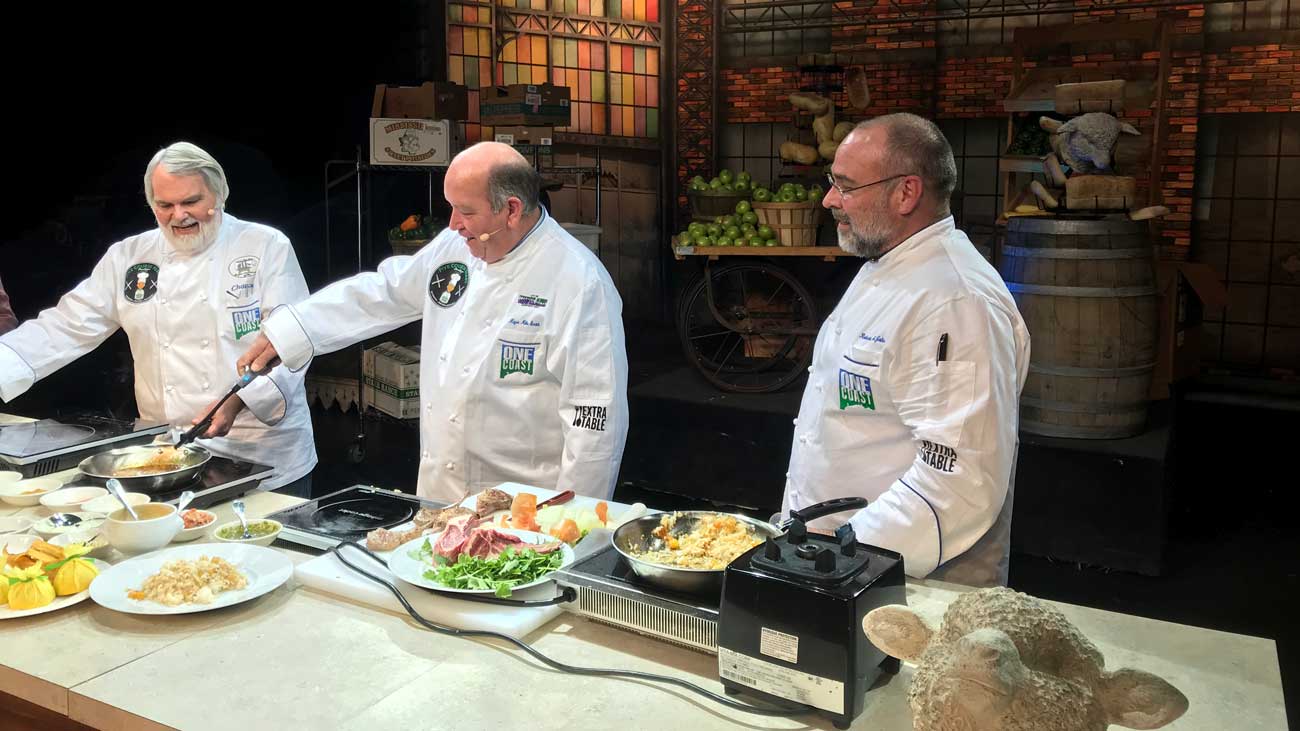The restaurant business is a harsh mistress. The hours are long, the work is stressful, the margins are low, the failure rate is huge, and I love every minute of it.
One of the components of this business that can seem arduous is recipe testing. Those who have done it before realize that it is a crucially tedious process with critical outcomes. Some outsiders might look at the process and say, “Cooking food over and over and eating the results? Throw me in that briar patch, I’m in.” It’s not all truffles and caviar. After you’ve eaten the sixth or seventh version of a certain pasta with cream sauce, things seem to all blend together.
I love the recipe-testing phase of any project, whether it involves opening a new restaurant, designing a new cookbook, or just creating new daily features for an up-and-running operation.
The daily feature aspect of recipe development is, by far, the easiest. As long as the inspiration is there— and so far we’re on a 28-year run of successful weekly-feature development— the execution is much easier. A prime example is our casual Creole concept Crescent City Grill. Most of the chefs who work in that kitchen have been there over a dozen years, some for as long as 28 years. We speak in kitchen shorthand and daily features typically come from a supplier’s telephone call, “We just got in a few dozen live soft-shell crabs. They’re huge. We probably won’t see any more for a month or so.” That’s an easy one; we’ll take them all. Later we’ll discuss potential sauces and accompaniments. The feature is set.
Daily feature development is also derived from seasonal availability. We receive a truck from local Louisiana and Mississippi farms once a week that allows us to pick and choose freshly picked vegetables and fruits, hours out of the garden. It’s like a mobile farmer’s market at our back door. From that point we just take the featured fruit or vegetable and talk about what we want to do with it. There are several factors that go into that discussion— what other ingredients we have on hand, what our customers typically like paired with that ingredient, and what new ideas one of the chefs might have for that particular item. Someone might have eaten a dish at a restaurant out of town or seen an article in a magazine that will serve as an inspirational starting point for a new feature.
With cookbooks the development process is more methodical than inspirational. Of the 10 books I have written, six of them have been cookbooks. They way I work is to start with the overall book concept first. Then I decide the chapter structure. From there I decide which recipes would belong in which chapter based on the book’s concept. Sometimes the recipe is something we have cooked at the restaurant through the years that will need to be adjusted for the home kitchen. Other times it is a recipe I have made at home that just needs to be written down and tested.
Many times a recipe for a cookbook starts with an idea that fits the theme or a chapter— “It feels like we don’t have enough beef in the ‘main course’ chapter, what would fit the theme of the book? Let’s try this…” From there the conversation would sound like, “Why don’t we take a whole beef tenderloin and cold smoke it, then grill it to medium rare. We can come up with some type of horseradish sauce or mustard sauce that would work well… wait a minute what if we came up with a horseradish-mustard sauce. Let’s do that. Take two tablespoons of Dijon mustard, one tablespoon of horseradish, a teaspoon of honey…” We then give that a shot.
Occasionally we nail it on the first try. Other times we nail it by the second or third try. Tweaking the salt levels and making sure that they consistency and appearance are spot on is crucial. Ultimately, the deciding factor is how it tastes, that should overrule everything else.
Opening a new restaurant is where the most challenging part of recipe development lives. Everything is new— the staff, the equipment, the menu, everything. Over a year ago we began developing recipes for a new restaurant we are about to open. I ate and sampled enough fresh ground beef to last a lifetime. I finally settled on a good blend six months ago. Two weeks ago when we fired up the kitchen equipment I worked up a few recipes with that blend and it wasn’t quite right. I immediately moved to a different ground beef offering— after sampling a few more— and it was perfect.
The process of choosing the perfect bun was much easier as we are having them beaked fresh every morning from the bakery across the street, but there were still a few changes and decisions that needed to be made once we set up shop in the space.
In the end, it’s like anything in life, the more work that is put in on the front end winds up yielding positive results in the long run. Recipe testing is wearisome and challenging, but the absence of it leads to a lesser cookbook or restaurant. It’s a tough job, but someone’s got to chew it.
Dijon Horseradish Sauce
2 tablespoon yellow mustard
1 /4 cup prepared horseradish
3/4 cup Dijon mustard
1/4 cup honey
2 tablespoon Bourbon
1 tablespoon ketchup
1 tablespoon red wine vinegar
1 tablespoon parsley, chopped
1 teaspoon fresh thyme, chopped
1 teaspoon black pepper, freshly ground
Mix together all ingredients. For the best flavor, prepare and refrigerate the mustard a day in advance. And allow the mustard to get to room temperature before serving.
Yield: 1 1 /2 cups



